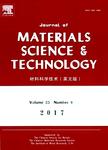Mesoporous Carbon-Tin Nanocomposites as Anode Materials for Li-ion Battery
Mesoporous Carbon-Tin Nanocomposites as Anode Materials for Li-ion Battery作者机构:Institute for Superconducting and Electronic Materials University of Wollongong NSW 2522 Australia ARC Centre of Excellence for Electromaterials Science University of Wollongong NSW 2522 Australia Centre for Analysis and Measurement Tianjin University Tianjin 300072 China
出 版 物:《Journal of Materials Science & Technology》 (材料科学技术(英文版))
年 卷 期:2008年第24卷第4期
页 面:657-660页
核心收录:
学科分类:0817[工学-化学工程与技术] 0806[工学-冶金工程] 08[工学] 0805[工学-材料科学与工程(可授工学、理学学位)] 080502[工学-材料学] 0703[理学-化学] 0802[工学-机械工程] 0801[工学-力学(可授工学、理学学位)] 0702[理学-物理学]
基 金:the Australian Research Council(ARC)through ARC Centre of Excellence funding(CE0561616)
主 题:Mesoporous Carbon Tin Nanocomposites Lithium ion battery
摘 要:A new mesoporous carbon-tin (MC-Sn) nanocomposite has been successfully prepared via a two-step method. From the transmission electron microscopy (TEM) observations, the tin nanoparticles were decorated on the as-prepared mesoporous carbons. The mesoprous structure of the carbon can effectively buffer the volume changes during the Li-Sn alloying and de-alloying cycles. The as-prepared MC/Sn nanocomposite electrodes exhibited extremely good cycling stability, with the specific capacity of Sn in the composite electrode calculated to be 959.7 mAh-g-1, which amounts to an impressive 90.9% of the theoretical value (990 mAh-g-1). The reversible capacity after 200 cycles is 96.1% of the first cycle reversible capacity, i.e., the capacity fade rate is only 0.0195% per cycle, which is even better than that of commercial graphite-based anodes.



